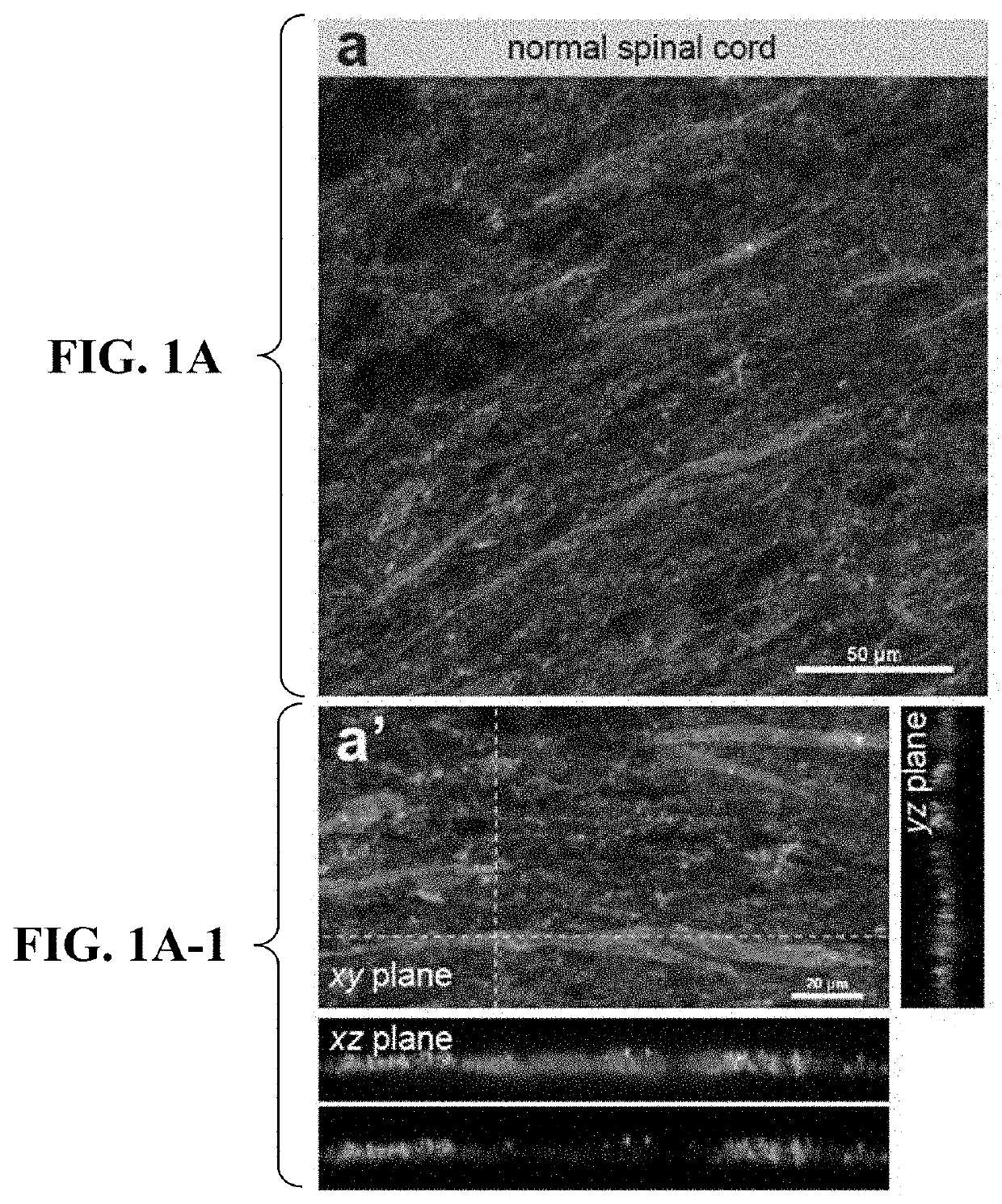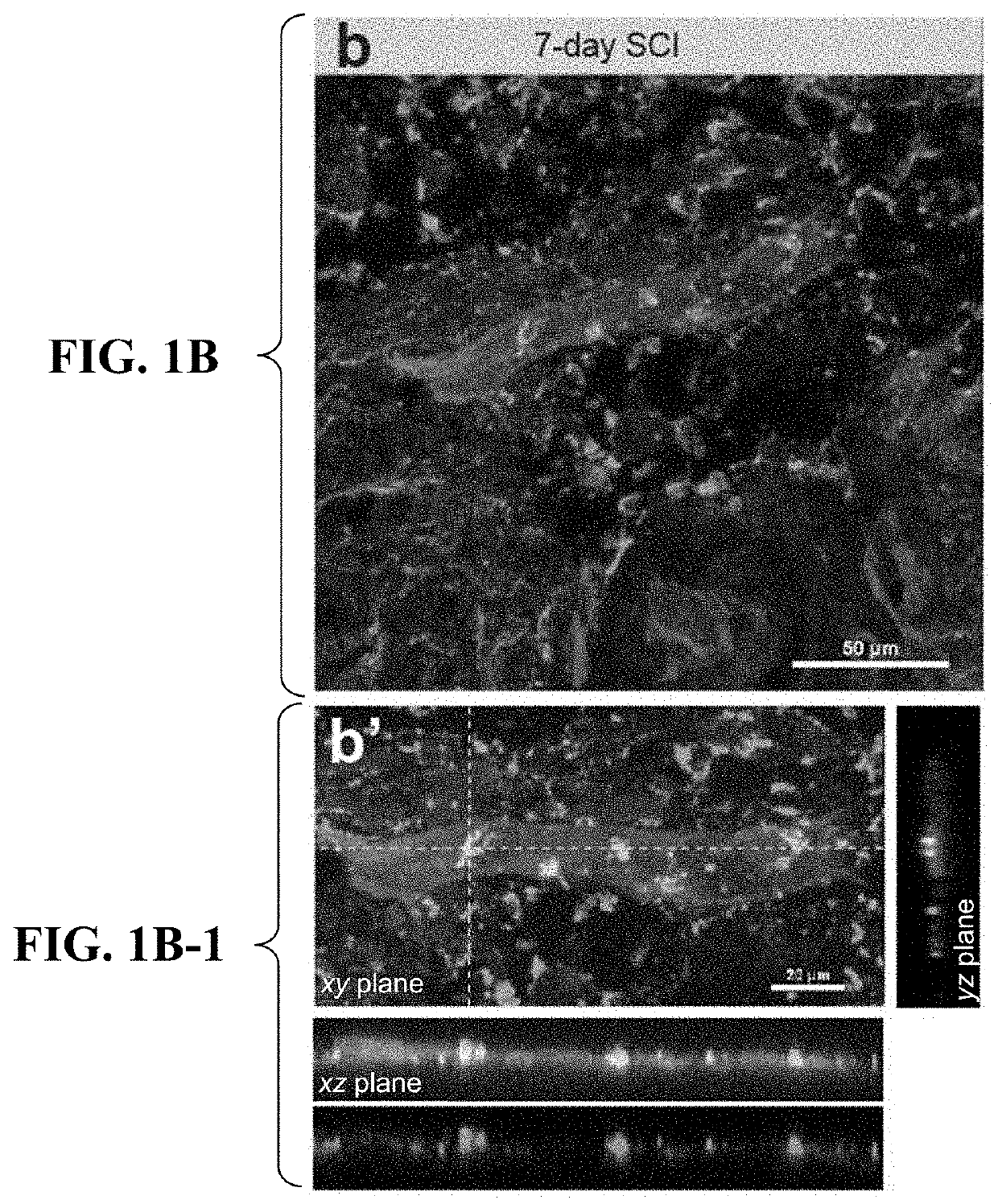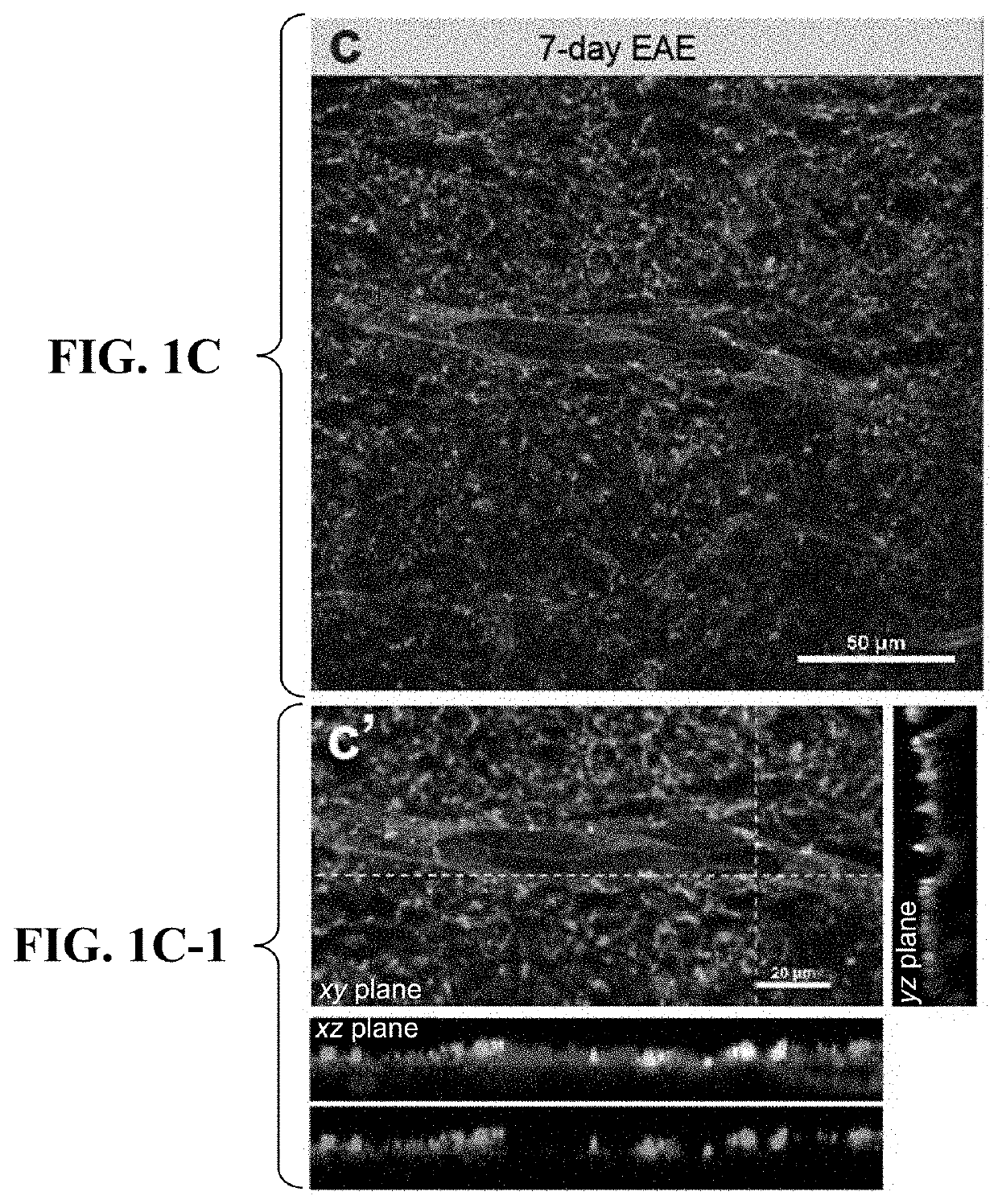Inhibition of vascular endothelial cell-mediated phagocytic processes for treatment of demyelinating conditions
a phagocytic process and demyelinating technology, applied in the field of demyelinating conditions inhibition of vascular endothelial cell-mediated phagocytic processes, can solve the problems of ineffective functional recovery of sci, high complexity of wound repair process,
- Summary
- Abstract
- Description
- Claims
- Application Information
AI Technical Summary
Benefits of technology
Problems solved by technology
Method used
Image
Examples
example 1
els in the Demyelinating Spinal Cords Contain Myelin Debris
[0231]Microvessels in the lesion epicenter are lost during the first two days after SCI, whereas ECs proliferate and give rise to newly formed microvessels from 3 days after injury, restoring microvessel density to a normal level by 1 week after SCI15,16. We first examined whether these newly formed microvessels could engulf myelin debris. Myelin is intact in normal spinal cords and the uninjured spinal microvessels contain very little detectable myelin basic protein (MBP) (FIGS. 1A, 1A-1). By contrast, myelin debris, fragmented from myelin sheath following SCI, started to closely associate with newly formed microvessels in the lesion core as early as 3 to 5 days post SCI (FIG. 9), and became more apparent at 1 week after SCI (FIG. 1B). The x-z and y-z view of myelin debris distribution relative to microvessels revealed that myelin debris was indeed engulfed by microvessels (FIG. 1B-1, FIG. 9). Myelin debris-containing micro...
example 2
BMECs-Induced Microvessel-Like Structures Engulf Myelin Debris
[0233]Primary mouse brain microvascular endothelial cells (BMECs) grown on Matrigel as their substrate could form microvessel-like structures that mimics diverse aspects of microvessels20. After 72 hr incubation with microvessel-like tubules, CFSE (Carboxyfluorescein succinimidyl ester)-labeled myelin debris was seen as scattered puncta around or within the tubules (FIG. 1F). A closer inspection of the distribution of myelin debris from the confocal x-z view of a capillary lumen revealed the apparent dynamics of myelin debris entry (FIG. 1F-1). Some myelin fragments appeared to be close to but were not in direct contact with the capillary surface, as indicated by a lack of co-localization with endothelial marker CD31 (FIG. 1F-1). Other myelin fragments were in the process of entering, whereas still others had completely transited the luminal membrane, showing partial or full co-localization with CD31 (FIG. 1F-1). These da...
example 3
Engulfment of Myelin Debris by BMECs
[0234]We next investigated the kinetics and mechanisms of microvascular engulfment of myelin debris by using primary BMECs and a BMEC cell line bEnd.3. Both primary BMECs and bEnd.3 cells engulfed myelin debris in a time-dependent manner with predominant perinuclear distribution (FIGS. 2A, 2D). To quantitatively determine the efficiency and kinetics of myelin debris engulfment by BMECs, we used fluorescence-activated cell sorting (FACS) that counts the number of myelin-laden ECs (myelin-ECs), as well as a MBP ELISA assay to detect the intracellular MBP level. FACS results confirmed that primary BMECs were able to engulf myelin debris (FIG. 2B). MBP ELISA assay detected a significant amount of MBP in BMECs treated with myelin debris for 72 hr (FIG. 2C). The kinetics of myelin engulfment by bEnd.3 cells exhibited inefficient engulfment from 24-48 hr, efficient engulfment from 48-72 hr, and saturated engulfment from 72-96 hr (FIGS. 2E, 2F). As ECs ar...
PUM
| Property | Measurement | Unit |
|---|---|---|
| time points | aaaaa | aaaaa |
| molecular weight | aaaaa | aaaaa |
| molecular weight | aaaaa | aaaaa |
Abstract
Description
Claims
Application Information
 Login to View More
Login to View More - R&D
- Intellectual Property
- Life Sciences
- Materials
- Tech Scout
- Unparalleled Data Quality
- Higher Quality Content
- 60% Fewer Hallucinations
Browse by: Latest US Patents, China's latest patents, Technical Efficacy Thesaurus, Application Domain, Technology Topic, Popular Technical Reports.
© 2025 PatSnap. All rights reserved.Legal|Privacy policy|Modern Slavery Act Transparency Statement|Sitemap|About US| Contact US: help@patsnap.com



